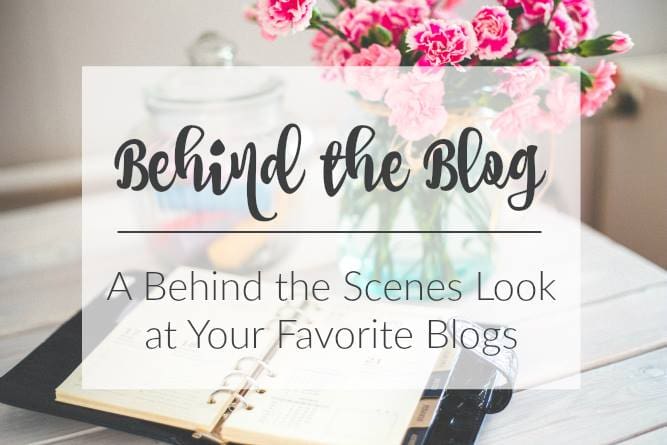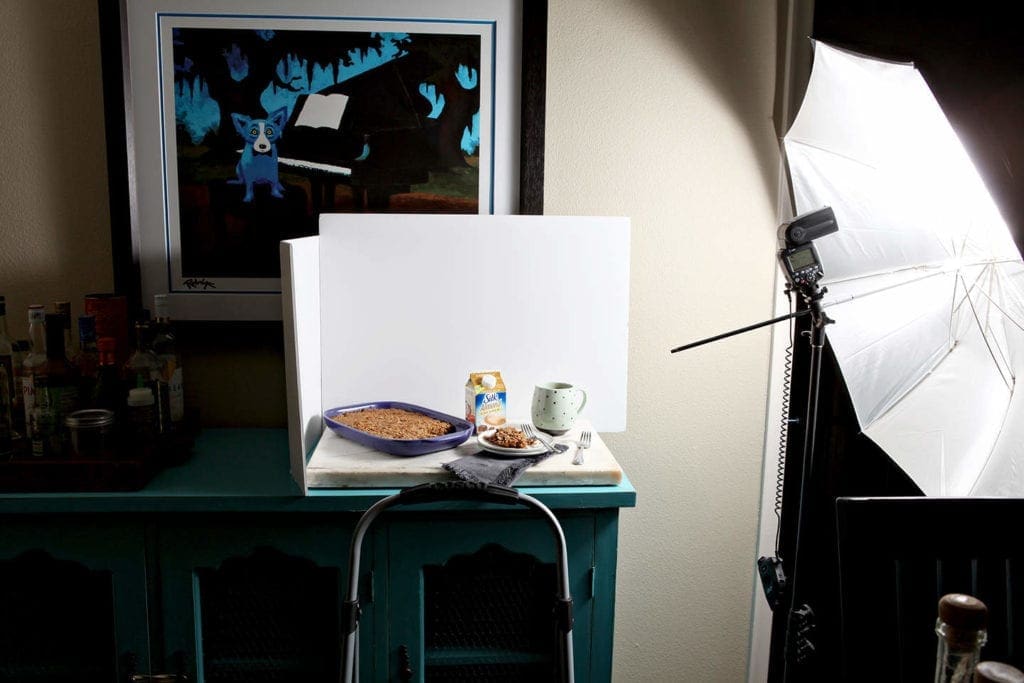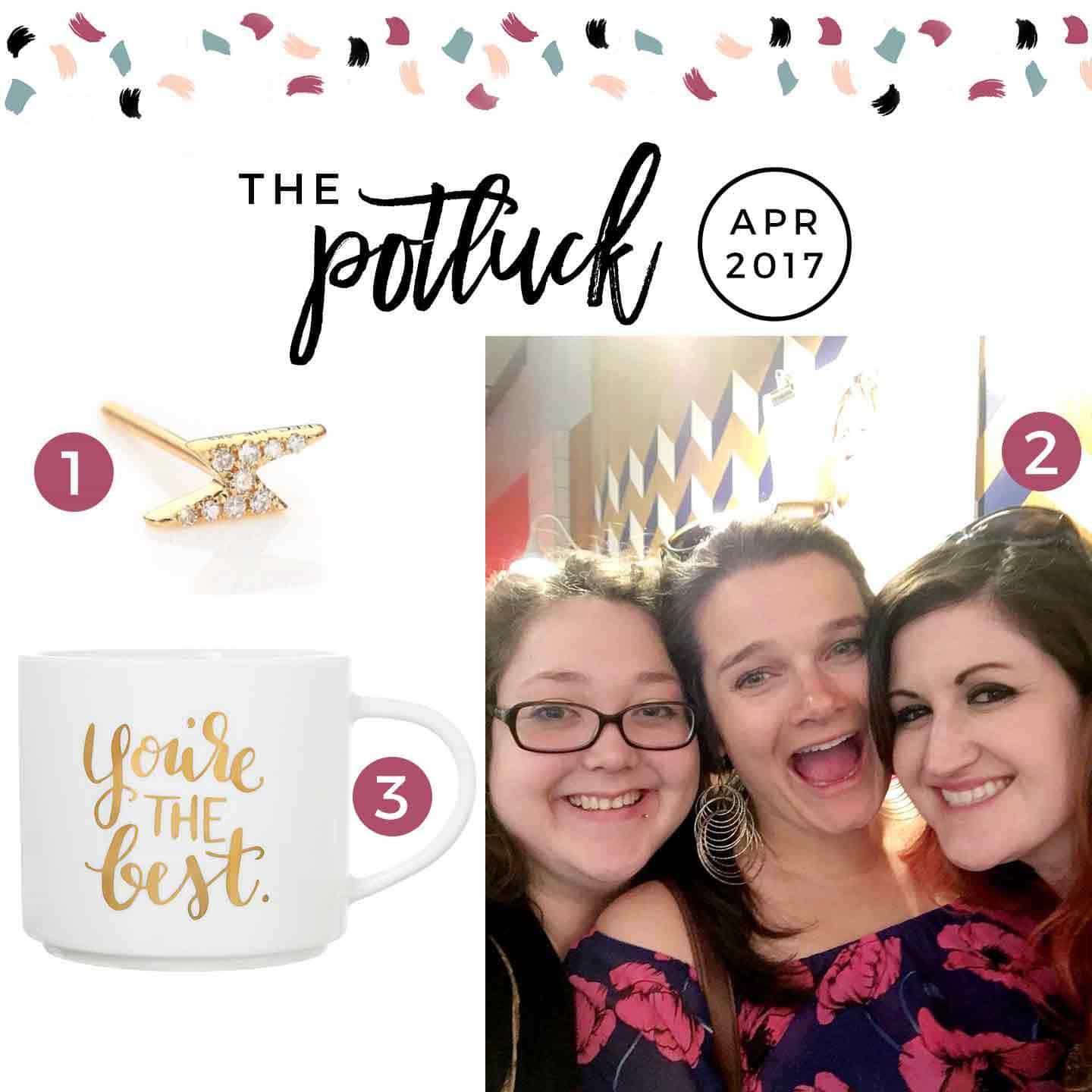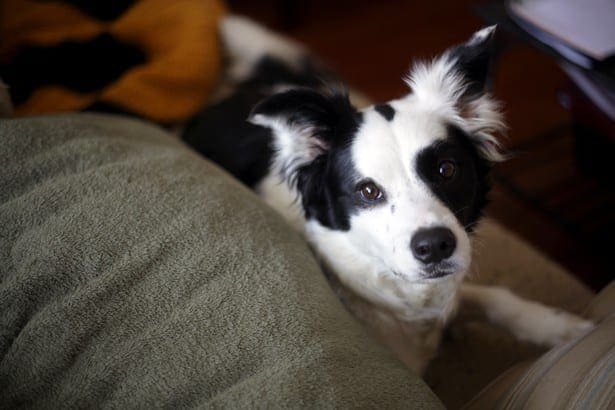Behind the Blog: Behind the Photographs

It’s time for yet another Behind the Blog post, and this month, I am so thrilled to be talking with y’all about photography.
As some of you might know, my background is in photography. Specifically, photojournalism. I’ve worked in the field for almost 10 years now, and I adore it. In fact, my lack of a photo-centric job led me to launching The Speckled Palate back in 2011.
While I didn’t know a lick about food photography — my previous jobs were all about me capturing the moment, whether it was at a political protest, sporting event, a crime scene, etc. — I was eager to try something different. It was a rough go for a while, but I kept at it, and I’ve been doing this ever since.
That said, my perspective on photography is a little different than most bloggers’ because I was a professional photographer going in. Granted, I wasn’t a professional food photographer, but I had the skill set and equipment. I didn’t have to the technical side of things to go with food blogging, and I’m excited to share a bit of that with y’all today.
Let’s get started!
This post contains affiliate links. If you were to make a purchase through one, I would receive a small commission. For more information about the affiliate programs The Speckled Palate participates in, please refer to my disclosure page.
Tips for Taking Great Food Photos
Here are a few things I’ve learned in the five-ish years I’ve been shooting food for The Speckled Palate and various editorial clients:
- Find the good light! Nobody wants to look at a photo where the light is dingy. So move your food closer to the window or learn how to use an off-camera flash (or other lighting gear!) to illuminate a low light situation. No window in your kitchen? Set up a small table in a well-lit room instead! Never use your on-camera flash, and if you have beautiful natural light, take advantage of it!
- Shoot at different angles. Some food looks really good shot from above. Some looks good head-on. Others look good at a 45-degree angle. Explore the different vantage points, and take photos at all of them so you have options. Chances are, several different angles will work well for the same dish so you can capture it fully. Be sure to remember to shoot wide (so we can see what’s being staged with the food), as well as close-up, too.
- Don’t forget about props. This is something that took me so long to learn, and I’m still working at it. For a food photograph to look natural, the food won’t be sitting by itself. Add in a fork or a spoon, maybe a napkin, and tinker with the placement. If you’ve made cookies, add a glass of milk. Think of the setting as a whole, what is going to be pleasing to the eye and what might be tied in with your recipe to bring it to life. That said, you don’t want your images to be cluttered, so keep that in mind as you’re shooting, too.
- Think about your camera settings. It’s fine and dandy to shoot on auto when you first get started, but if you want more control over your images, it’s time to learn about aperture, shutter speed and ISO. This book covers it quite well and talks about digital food photography!
- Practice, practice, practice! Food photography isn’t something you’re going to pick up overnight or suddenly be spectacular at (unless you’re really, really lucky), so keep tinkering and testing and trying new things. One of my mentors advised me to try shooting with a different lens and shooting at a completely different angle whenever I felt stuck on a photo assignment a long time ago, and I still use this trick. If I feel like all my shots look the same, I switch out my lenses and try new angles and just see what happens.
Behind the Scenes at The Speckled Palate
This is what a typical photoshoot looks like in my house:

Keep in mind that it’s not night when this photo was snapped. No, this was taken during my daughter’s naptime in the early afternoon hours. And even though I love, love, love natural light, I don’t get enough of it in my house to make the kind of photographs I want to make, and I certainly cannot schedule my photoshoots around the fleeting natural light that we do get indoors, so I light my own images. (We’ll get to this in a bit.)
First, let’s talk about the setting. I use the buffet table that acts as a bar in our living room the most when I’m photographing food. That piece of marble is a permanent fixture on the buffet because it’s heavy as all get-out. I actually have to move a tray of whiskey from it whenever it’s time to do a photoshoot. The space I shoot on is a little more than 30″ long and 18″ wide. You don’t need a lot of space to for food photography!
I carry in my flash, which sits on a lighting stand with an umbrella attached and is already connected to a PocketWizard (which signals the flash to fire when my camera’s shutter clicks), and I set up the foam boards behind the food to serve as a backdrop. I also stand up a foam board to act as a reflector for the flash.
You can see the final shots from this shoot here.
My Equipment List
I find this is what everyone always wants to know when they find out I’m a photographer by trade. You’ll find photographers who are very opinionated about their brand of equipment. I’ve been fortunate enough to shoot with both Canon and Nikon cameras throughout my career, and I think both are great. I own Canon equipment. I have owned Canon equipment since my first film camera, and I’ve stuck with the brand because I have so much invested in the equipment I do own. And it works great for what I’m doing, so I don’t plan to switch anytime soon (though I’ve had friends make the switch!)
With that in mind, here’s a list of the equipment I keep in my camera bag to create my food photographs, as well as some thoughts on each of them:
- Canon 5D Mark II: I’ve had this camera since 2009, and it has served me well. It’s full-frame, meaning the images aren’t cropped and the length of a lens is true on this camera body. That said, I can’t really shoot super wide angle shots on it because of distortion. (This is why I hardly ever use my 15-35mm lens anymore.) The 5D Mark II is an older body, though, so if someone was asking me of a newer camera body to purchase, I’d recommend the 5D Mark III, 7D Mark II or the Rebel T6 if you’re just starting out.
- Canon 600EX-RT Speedlite Flash: I purchased this flash because I wanted to be able to use it on camera for photo assignments that didn’t involve food, as well as use it off camera to light portraits and food images. It works well on and off camera, and even though the purchase price was steeper than I wanted, it’s well worth every penny since I’m able to tether it to my Pocketwizards and light my food photographs.
- Canon 24-70mm f/2.8L Lens: This is my go-to lens. I can capture wide angle shots with it or tighter, telephoto images, too. It offers the variety I need for a photo assignment that’s fast moving, and when I use this while shooting food, I generally shoot closer to 70mm.
- Canon EF 50mm f/1.8 Lens: This is another lens I keep in my bag at all time. It’s small, it travels well, and the wide aperture makes for some beautiful food images.
- Westcott Collapsible Umbrella Flash Kit: This flash kit is so handy. I keep it standing in my home office, but it breaks down and travels well with little fuss.
- PocketWizardPlus X Transceivers: These transceivers make it possible for me to shoot with an off-camera flash, and I love them for it. They’re not cheap, but they’re consistent and work well for what I need them to do.
- Oben Aluminum Lateral Tripod: This tripod is awesome. It’s lightweight and allows me to shoot horizontally, vertically and above my subject. It took me a little bit of time to figure out, but I’m a big fan, and this comes with me on every assignment, whether I use it or not. (I like to handhold my camera, so it doesn’t get busted out often, but it always does such a fantastic job!)
How I edit my images
I come from a photojournalism background, so my editing process is very no frills and very quick. (Keep in mind that in photojournalism, photos are not to be altered, and the editing is be a bare minimum. I’m also expected to send on a short deadline, so I’ve gotten this process down to a science.)
I cull my images, as well as add cutline information to them, in Photo Mechanic. From there, I import them into Photoshop. Once there, I’ll bring up the levels and curves to make sure the exposure is correct on the image, then I’ll color correct.
And that’s it.
Nothing else is done to my images. I always want the colors to pop, and I edit the food to where the color works, but I never, ever, ever overwork images, nor will I Photoshop something in (or out!) if it’s displeasing to the eye. I try to get things right in the camera – from the angle the image was taken to the crop to the background being straight to the subject itself.
…
Be sure to check out my other posts in the Behind the Blog Series!
Other posts that go BEHIND THE BLOG and the business of food blogging: Behind the Blog: Top Posts / Behind the Blog: Frequently Asked Questions / Behind the Blog: @katiewilliamsen of Twin Stripe Interview / Behind the Blog: Organization, Planning and Balance / Behind the Blog: Social Media Tips / Behind the Blog: The Workspace / Behind the Blog: Blogs I Love / Behind the Blog: The Speckled Palate’s Beginning
…
And be sure to check out my friends’ posts for this month’s topic, too!
Create Great Blog Post Images {Tips & Tricks} | The Natural Homeschool
Behind the Photos: Keeping it Real | Robb Restyle
Behind the Scenes: Blog Photos | The Life of Jennifer Dawn
How I Improved My Photography | Arts & Crackers
Photography: I Have So Much More to Learn | Smart Girls DIY
…
How do you use photography for your blog?
Do you use similar equipment? And is your process similar to mine?

About the Author:
Erin Parker is a Southern gal living in Texas with her husband and two daughters. She started The Speckled Palate to share what she was cooking as a newlywed… and over the years, it’s evolved to capture her love for hosting. Specifically, the EASIEST, lowest key entertaining because everyone deserves to see their people and connect over good food. Learn more about her…








Thank you so much for sharing this! I’m always trying to improve my food photography, so it’s really cool to hear about how you do it. Your photos are always SO good! You definitely inspire me.
You’re so welcome, Jenna! I think we’re all always trying to improve our photography skills, so I’m glad you found this helpful and inspiring. And thank you for saying that – you’re too sweet!
Wonderful tips! you put my rudimentary skills to shame. I’m going to read through this again just so I can soak in all of this great advice. Tip number 3 is something I’ve been trying to work on more among things. Thanks for sharing your process!
Thank you, Jennifer! We’ve all got different strengths, and my background is entirely photo-related, so I loved being able to share this. I hope that my advice helps you in future photography sessions, and I feel you on top #3. I’m always working on that one, too!
I really want to start working on my photography. Usually I am posting what we are eating and I have two hungry boys waiting for me to finish snapping a few pictures so they can eat. I need to start being a bit more deliberate about it.
It’s so hard when you’re trying to take photos while people wait to eat! I always feel SO rushed when that’s the case for me, and it’s stressful because you feel like you can’t be deliberate. I find that I get the best photos and have the best session when there aren’t hungry mouths to feed, and I can take my time and plot it all out at my own speed. That said, it’s not always do-able, so you just do your best. But I know how it goes! Here’s to all of us improving on our photography skills and helping each other!
Great tips – Food photography is mystifying to me and your tips are fantastic… also I am going to pick up that book you mentioned. 🙂
Kristy
Thanks so much, Kristy! I hope you enjoy the book as much as I have. Food photography is definitely mystifying, but it’s certainly easier than one would think!